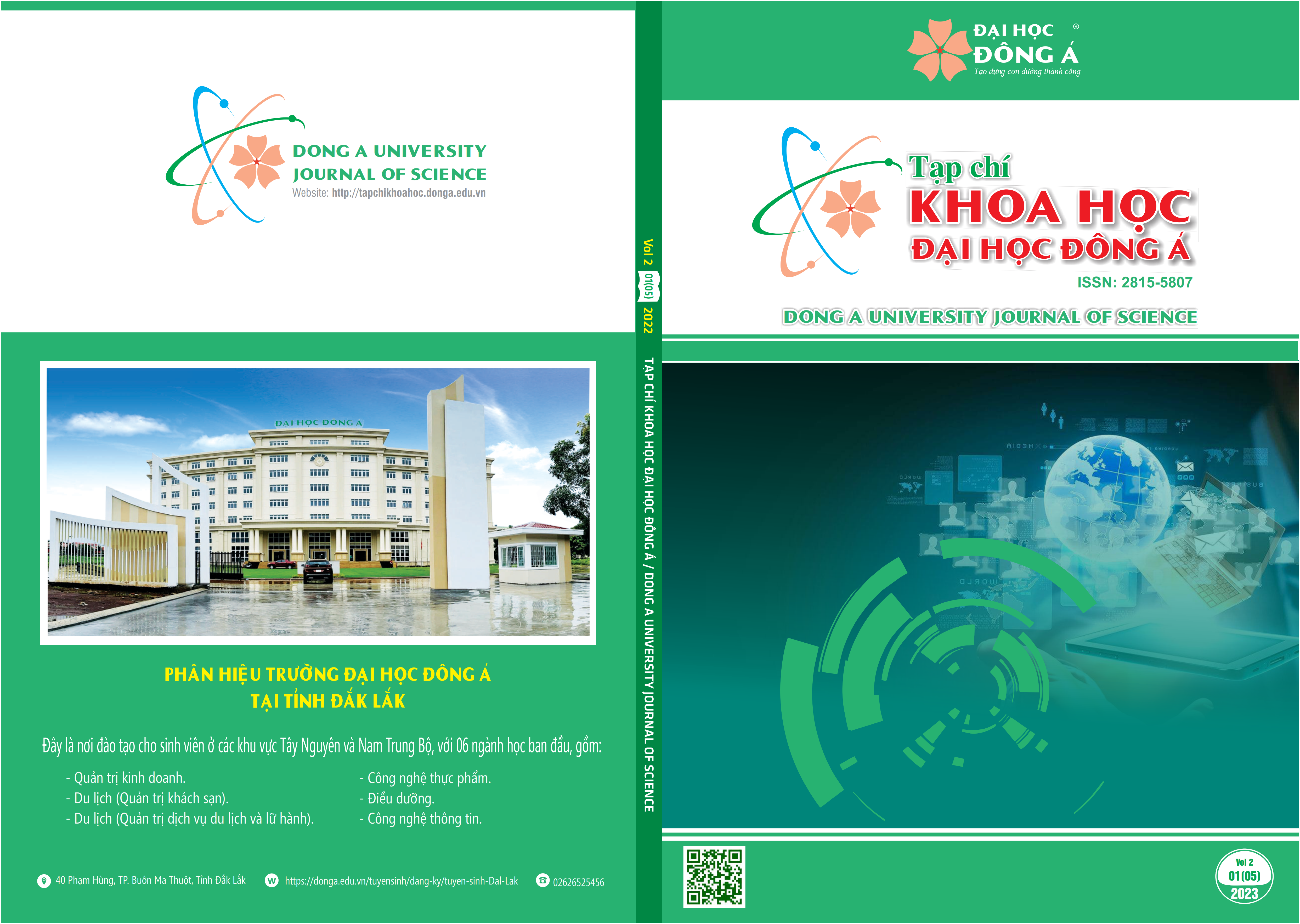Virtual Screening Flavonoids to Discover Potential Inhibitors of Protein Tp53-Inducible Glycolysis and Apoptosis Regulator (TIGAR)
Main Article Content
Abstract
Protein tp53-inducible glycolysis and apoptosis regulator (TIGAR) has been shown to be overexpressed in cancer cell lines. Therefore, discovering molecules that inhibit the TIGAR protein has been considered as a promising approach in the development of cancer treatments. In this study, we applied a virtual screening method to find out flavonoids that are able to bind to the catalytic site of TIGAR. The results show that 124 flavonoids had stronger binding affinity for TIGAR than reference compound. Among them, three candidates with the strongest binding affinity are kaempferol-3-O-rutinoside, ligustroflavone and obacunone. Notably, the kaempferol-3-O-rutinoside showed strongest binding affinity to TIGAR, which forms six hydrogen bonds with the amino acids Thr230, Arg203, Tyr92, Asn17, Gln23, Glu89 and two hydrophobic interactions at amino acids Leu100 and Lys20. In addition, molecular dynamics simulation was used to evaluate the stability of protein and kaempferol-3-O-rutinoside complex over a period of 5 ns.
Article Details
Keywords
TIGAR, flavonoid, Kaempferol-3-O-rutinoside, virtual screening, molecular dynamics simulation
References
A. Periperakis. (2022). Kaempferol: Antimicrobial Properties, Sources, Clinical, and Traditional Applications. International Journal of Molecular Sciences, 23(23). doi:https://doi.org/10.3390%2Fijms232315054.
A. Scarano, M. C. (2018). Looking at Flavonoid Biodiversity in Horticultural Crops: A Colored Mine with Nutritional Benefits. Plants. doi: https://doi.org/10.3390/plants7040098.
C. R. Garcia, C. S. (2019). Dietary Flavonoids as Cancer Chemopreventive Agents: An Updated Review of Human Studies. Antioxidants, 8(5), 137-160. doi: https://doi.org/10.3390/antiox8050137.
C. Wanka, J. P. (2012). Tp53-induced Glycolysis and Apoptosis Regulator (TIGAR) Protects Glioma Cells from Starvation-induced Cell Death by Up-regulating Respiration and Improving Cellular Redox Homeostasis. The Journal of Biological Chemistry, 287, 33436 –33446. doi: https://doi.org/10.1074/jbc.M112.384578.
Clark, D. E. (2008). What has virtual screening ever done for drug discovery? . Expert Opinion on Drug Discovery, 3(8), 841-851. doi:doi: 10.1517/17460441.3.8.841.
D. Kashyap . (2017). Kaempferol - A dietary anticancer molecule with multiple mechanisms of action: Recent trends and advancements. Journal of Functional Foods, 30, 203-219. doi: https://doi.org/10.1016%2Fj.jff.2017.01.022.
D. M. Kopustinskiene. (2020). Flavonoids as Anticancer Agents. Nutrients, 12(2), 457-482. doi: https://doi.org/10.3390/nu12020457.
F. Hua. (2021). Rat plasma protein binding of kaempferol-3-O-rutinoside from Lu’an GuaPian tea and its anti-inflammatory mechanism for cardiovascular protection. Journal of Food Biochemistry, 45(7). doi:https://doi.org/10.1111/jfbc.13749.
F. Stanzione, I. G. (2021). Use of molecular docking computational tools in drug discovery. Progress in Medicinal Chemistry, 60, 273-343. doi: https://doi.org/10.1016/bs.pmch.2021.01.004.
Forli, S. (2016). Computational protein-ligand docking and virtual drug screening with the AutoDock suite. Nature Protocols, 11(5), 905-919. doi: http://dx.doi.org/10.1038/nprot.2016.051.
H. Li, G. J. (2009). Structural and Biochemical Studies of TIGAR (TP53-induced Glycolysis and Apoptosis Regulator). The Journal of Biological Chemistry, 284, 1748-1754. doi: https://doi.org/10.1074/jbc.M807821200.
Han Sung. (2021). Global cancer statistics 2020: GLOBOCAN estimates of incidence and mortality worldwide for 36 cancers in 185 countries. CA Cancer J Clin, 71, 209-249. doi: https://doi.org/10.3322/caac.21660.
Hua Li, G. J. (2009). Structural and Biochemical Studies of TIGAR (TP53-induced Glycolysis and Apoptosis Regulator). Journal of Biological Chemistry, 284(3), 1748-1754. doi: https://doi.org/10.1074/jbc.M807821200.
Institute, N. C. (2021). What Is Cancer? Retrieved from https://www.cancer.gov/about-cancer/understanding/what-is-cancer#definition, October 11.
J. Geng, X. Y. (2018). The diverse role of TIGAR in cellular homeostasis and cancer. Free Radical Research, 52(11-12), 1240-1249. doi: https://doi.org/10.1080/10715762.2018.1489133.
J. M. Xiel. (2014). TIGAR Has a Dual Role in Cancer Cell Survival through Regulating Apoptosis and Autophagy. Cancer Research, 74(18), 5137-5178. doi: https://doi.org/10.1158/0008-5472. CAN-13-3517.
J. Poyya, D. J. (2021). Receptor based virtual screening of potential novel inhibitors of tigar [TP53 (tumour protein 53)]-induced glycolysis and apoptosis regulator. Medical Hypotheses, 156. doi: https://doi.org/10.1016/j.mehy.2021.110683.
K. Bensaad . (2006). TIGAR, a p53-Inducible Regulator of Glycolysis and Apoptosis. Cell, 126(1), 107-120. doi: https://doi.org/10.1016/j.cell.2006.05.036.
K. Y. Won. (2012). Regulatory role of p53 in cancer metabolism via SCO2 and TIGAR in human breast cancer. Human Pathology, 43(2), 221-228. doi: https://doi.org/10.1016/j.humpath.2011.04.021.
Lindahl, A. H. (2020). GROMACS 2020.4 Manual (2020.4). Zenodo. doi: https://doi.org/10.5281/zenodo.4054996.
N. O'Boyle. (2011). Open Babel: An open chemical toolbox. Journal of Cheminformatics. Retrieved from https://jcheminf.biomedcentral.com/articles/10.1186/1758-2946-3-33.
O. Trott, A. O. (2010). AutoDock Vina: Improving the speed and accuracy of docking with a new scoring function, efficient optimization, and multithreading. Journal of Computational Chemistry, 31(2), 455-461. doi: https://doi.org/10.1002/jcc.21334.
Ritva R. C. Valencia, J. K. (2010). Flavonoids and other phenolic compounds in Andean indigenous grains: Quinoa (Chenopodium quinoa), kañiwa (Chenopodium pallidicaule) and kiwicha (Amaranthus caudatus). Food Chemistry, 120(1), 128-133. doi: https://doi.org/10.1016/j.foodchem.2009.09.087.
S. Basith, M. C. (2017). Expediting the Design, Discovery and Development of Anticancer Drugs using Computational Approaches. Current Medicinal Chemistry, 24(42), 4753-4778. doi: doi: 10.2174/0929867323666160902160535.
S. Brogi (2020). Editorial: In silico Methods for Drug Design and Discovery. Frontiers in Chemistry, 8. doi: https://doi.org/10.3389%2Ffchem.2020.00612.
S. Habtemariam. (2011). α-Glucosidase Inhibitory Activity of Kaempferol-3-O-rutinoside. Natural Product Communications, 6(2), 201-203. doi: https://doi.org/10.1177/1934578X1100600211.
S. Jo, T. K. (2008). CHARMM-GUI: A web-based graphical user interface for CHARMM. Journal of Computational Chemistry, 29(11), 1859-1865. doi: https://doi.org/10.1002/jcc.20945.
S. M. Nabavi. (2020). Flavonoid biosynthetic pathways in plants: Versatile targets for metabolic engineering. Biotechnology Advances, 38. doi: https://doi.org/10.1016/j.biotechadv.2018.11.005.
S. P. Leelananda, S. L. (2016). Computational methods in drug discovery. Journal of Organic Chemistry, 12, 2694-2718. doi: https://doi.org/10.3762%2Fbjoc.12.267.
Shoichet, B. K. (2004). Virtual screening of chemical libraries. Nature, 432, 862-865. doi: doi: 10.1038/nature03197.
T. T. T. Linh, T. N. (2022). Investigation of Cell Proliferation Inhibition Through Protein Tp53-Inducible Glycolysis And Apoptosis Regulator (TIGAR) Of Compounds Isolated From Goniothalamus Elegans Ast. TNU Journal of Science and Technology, 228(01), 219 - 226. doi: https://doi.org/10.34238/tnu-jst.6350
X. Lin, X. L. (2020). A Review on Applications of Computational Methods in Drug Screening and Design. Molecules, 25(1375). doi: doi:10.3390/molecules25061375.


